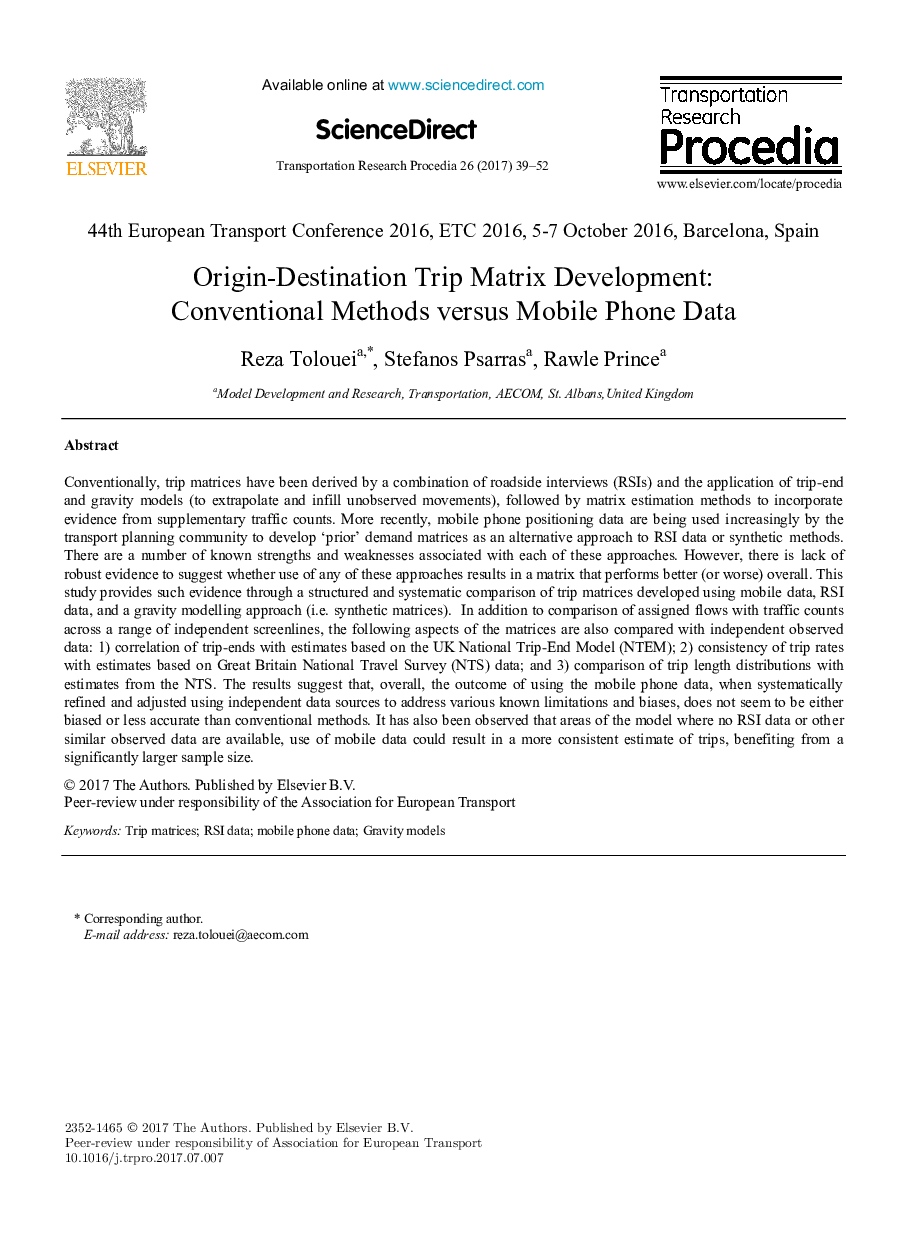| کد مقاله | کد نشریه | سال انتشار | مقاله انگلیسی | نسخه تمام متن |
|---|---|---|---|---|
| 5125000 | 1488269 | 2017 | 14 صفحه PDF | دانلود رایگان |
Conventionally, trip matrices have been derived by a combination of roadside interviews (RSIs) and the application of trip-end and gravity models (to extrapolate and infill unobserved movements), followed by matrix estimation methods to incorporate evidence from supplementary traffic counts. More recently, mobile phone positioning data are being used increasingly by the transport planning community to develop 'prior' demand matrices as an alternative approach to RSI data or synthetic methods. There are a number of known strengths and weaknesses associated with each of these approaches. However, there is lack of robust evidence to suggest whether use of any of these approaches results in a matrix that performs better (or worse) overall. This study provides such evidence through a structured and systematic comparison of trip matrices developed using mobile data, RSI data, and a gravity modelling approach (i.e. synthetic matrices). In addition to comparison of assigned flows with traffic counts across a range of independent screenlines, the following aspects of the matrices are also compared with independent observed data: 1) correlation of trip-ends with estimates based on the UK National Trip-End Model (NTEM); 2) consistency of trip rates with estimates based on Great Britain National Travel Survey (NTS) data; and 3) comparison of trip length distributions with estimates from the NTS. The results suggest that, overall, the outcome of using the mobile phone data, when systematically refined and adjusted using independent data sources to address various known limitations and biases, does not seem to be either biased or less accurate than conventional methods. It has also been observed that areas of the model where no RSI data or other similar observed data are available, use of mobile data could result in a more consistent estimate of trips, benefiting from a significantly larger sample size.
Journal: Transportation Research Procedia - Volume 26, 2017, Pages 39-52
